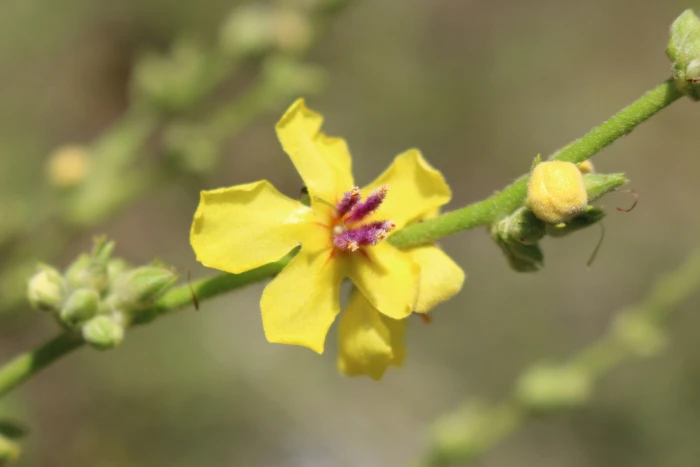Scallop-Leaved Mullein
(Verbascum sinuatum)
Scallop-Leaved Mullein (Verbascum sinuatum)
/
/

© Fabien Piednoir
CC BY-SA 4.0
Image By:
© Fabien Piednoir
Recorded By:
Copyright:
CC BY-SA 4.0
Copyright Notice:
Photo by: © Fabien Piednoir | License Type: CC BY-SA 4.0 | License URL: http://creativecommons.org/licenses/by-sa/4.0/ | Uploader: fabienpiednoir | Publisher: iNaturalist |























Estimated Native Range
Climate Requirements for Mankato, Minnesota
| This Plant | Your Site | Plant Suitability for Your Location | ||
|---|---|---|---|---|
| • Precipitation | 2" - 68" | 30" | Your precipitation may be too high for this plant. | Too high |
| • High Temp. | 63°F - 106°F | 84°F | Your summer temperatures are normal for this plant. | Excellent |
| • Low Temp. | 14°F - 58°F | 3°F | Your winter temperatures may be too cold for this plant | Too cold |
This plant may not grow well at your location - your precipitation is too high.
Summary
Verbascum sinuatum, commonly known as the scallop-leaved mullein or wavyleaf mullein, is a perennial herb native to rocky slopes, open woodlands, and scrub areas in the Mediterranean region, including Central Asia and Israel. It typically grows to a height of 3.9-4.9 feet (1.2-1.5 meters) and is characterized by its erect inflorescence stem covered with stellate hairs. The foliage is notable for its deeply lobed, wavy margins, giving rise to the common name. Scallop-leaved mullein produces yellow, lamp-shaped flowers from late May to August, which are moderately showy and attract bees for pollen collection, although the plant does not produce nectar. The flowers have a unique corolla shedding mechanism that is triggered by touch or damage.
This species is valued for its drought tolerance and ability to thrive in poor, heavy soils, making it suitable for xeriscaping and naturalistic plantings. It is also used in wildflower gardens and as an ornamental feature in borders due to its distinctive foliage and flower structure. Scallop-leaved mullein prefers full sun but can tolerate partial shade and requires well-drained soil. While generally low-maintenance, it can be susceptible to root rot in overly wet conditions.CC BY-SA 4.0
This species is valued for its drought tolerance and ability to thrive in poor, heavy soils, making it suitable for xeriscaping and naturalistic plantings. It is also used in wildflower gardens and as an ornamental feature in borders due to its distinctive foliage and flower structure. Scallop-leaved mullein prefers full sun but can tolerate partial shade and requires well-drained soil. While generally low-maintenance, it can be susceptible to root rot in overly wet conditions.CC BY-SA 4.0
Plant Description
- Plant Type: Herb
- Height: 1-3 feet
- Width: 1-2 feet
- Growth Rate: Moderate
- Flower Color: Yellow
- Flowering Season: Summer
- Leaf Retention: Semi-deciduous
Growth Requirements
- Sun: Full Sun
- Water: Medium, High
- Drainage: Fast
Common Uses
Border Plant, Drought Tolerant, Low Maintenance, Rock Garden
Natural Habitat
Rocky slopes, open woodlands, and scrub areas in the Mediterranean region
Other Names
Common Names: Sinuate Mullein
Scientific Names: Verbascum sinuatum, Celsia sinuata, Lychnitis sinuata, Thapsus sinuatum, Verbascum arnaizii, Verbascum ceccarinianum, Verbascum graecum, Verbascum graecum, Verbascum gussonei
GBIF Accepted Name: Verbascum sinuatum